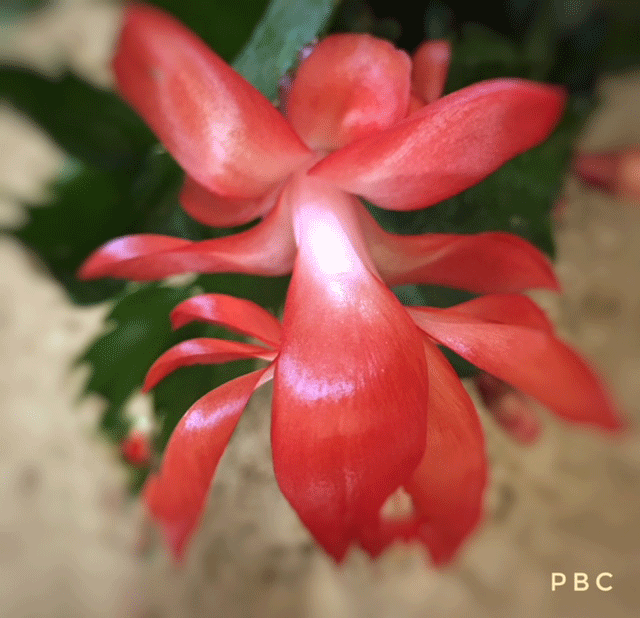
“Thanksgiving Cactus or Christmas Cactus?” is a question I’ve been trying to answer, and I think I’ve found the answer while searching the internet and studying my garden books. Here are two plants I bought recently; I learned both are Thanksgiving Cactus, although they were labeled Holiday Cactus, which seems to be a catch-all title for Thanksgiving, Christmas, and Easter Cactus.
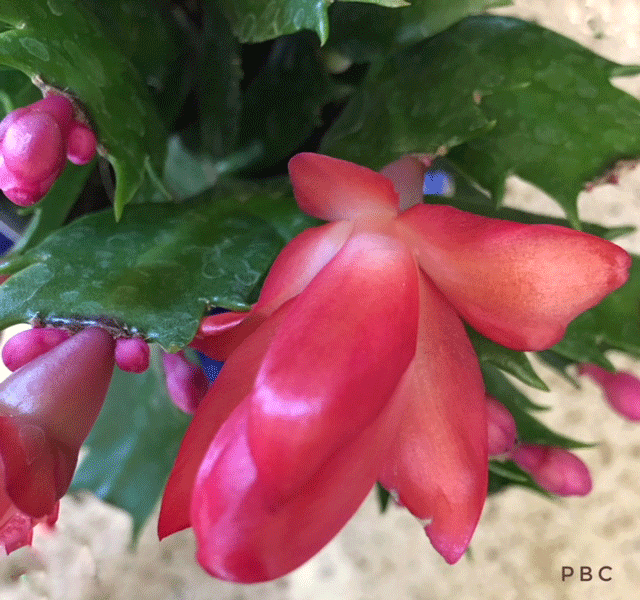 The first plant is Schlumbergera Sunset Dancer and the one below is Schlumbergera Thor Olga.
The first plant is Schlumbergera Sunset Dancer and the one below is Schlumbergera Thor Olga.
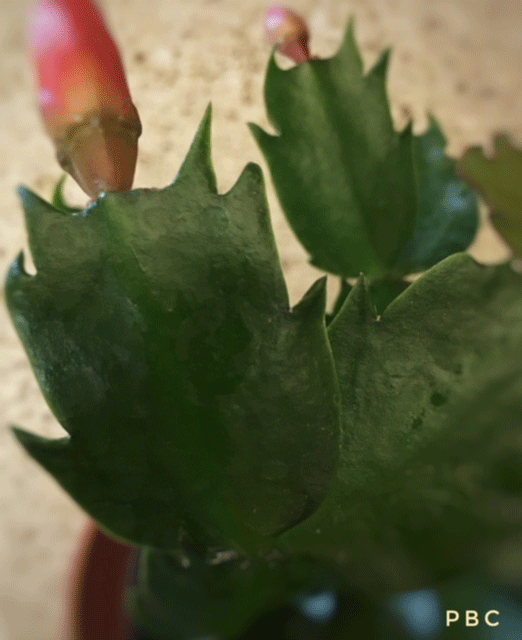
These Thanksgiving Cacti above have sharper, pointed leaves than a Christmas Cactus (immediately below), which has more rounded leaves. My Christmas Cactus is a bit older, and is looking rather sad right now; I’m a bit embarrassed to show it, but here it is.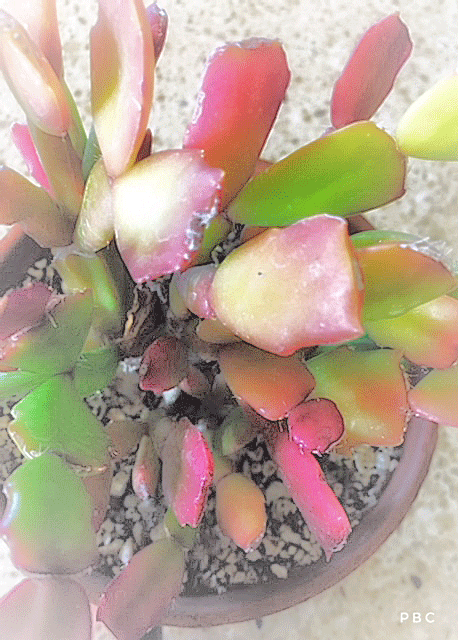
After doing this research, I’m hoping to restore the Christmas Cactus to good health, by giving it proper attention.
All three types of holiday cacti are cared for very differently than the desert cacti we are familiar with here in Southern California. The three holiday cacti were originally found in Brazil, growing in rock crevices and tree boughs, and they prefer bright filtered light rather than the full sun. Too much sun turns leaves yellow. It’s no wonder my Christmas cactus never flowered. Christmas and Thanksgiving Cactus also prefer well drained soil: Let the top of the soil become dry before watering, but don’t let the plant dry completely. Flower buds will drop if temperatures are too hot and soil too dry. A little peat moss for acidity is also beneficial in their soil. Christmas and Thanksgiving cactus bloom twice a year, between October and February and again between March and May. On the other hand, the Easter Cactus blooms once a year, during April.
To have blooms for the upcoming holidays, start around October 15th (ideally) to place your plant in total darkness for 12 hours each day. I’m doing that right now, placing my Christmas Cactus in a dark closet from 7:00 p.m. until 7 a.m. Do this for 6 – 8 weeks, or until buds start forming, then place the plant in a bright east-facing window. During the flowering and growth season, fertilize the plant with a liquid fertilizer every 7 – 10 days My plants are indoors right now, but come May 15th or after the last frost (and we do get frost in California), I’ll place them outside in light or dappled shade, where they’ll spend the summer; around October 15th of next year, I’ll start the 12-hours-of-darkness-for-holiday-blooms all over again. These plants can live 25 years or more, and can be passed down from one generation to another. They can grow very large, and do well in pots and hanging baskets. If kept inside all year, they prefer an east-facing window. The beautiful Christmas and Thanksgiving Cactus come in many colors, from orange and pale yellow, to red, pink, and white, and I plan to add a white one to my collection soon. I’m glad I’ve finally learned the special care needed for these lovely Brazilian cacti, and I can’t wait to see how my older Christmas Cactus does with some special care. I’ll be sure to show you the results in a few weeks. I myself learned a lot while working on this post; I hope it has helped you as well. Please let me know if you have any questions or some helpful hints for me.
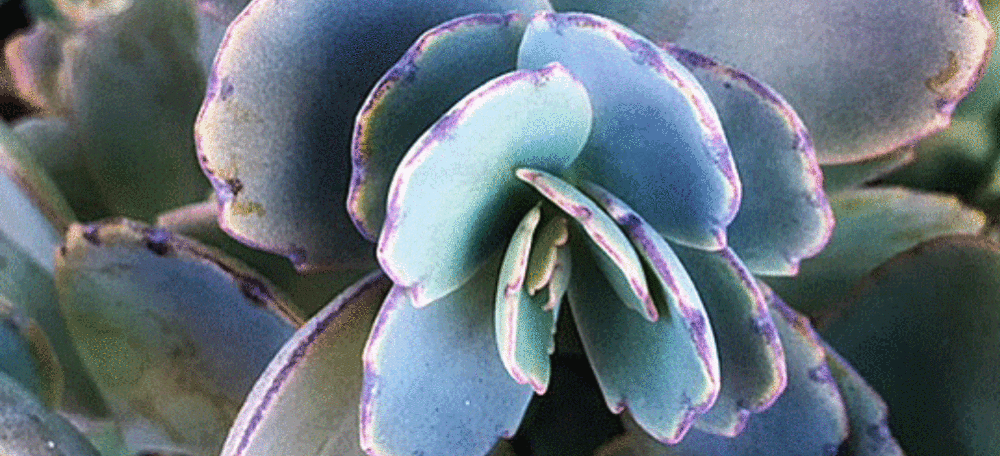
Thank you for the beautiful post. I am presently trying to revive a severely wounded Christmas Cactus and I didn’t know quite what to do. This post helps me a lot.
You are very welcome. Let me know how your plant does.
Thank you for the beautiful post. I am presently trying to revive a severely wounded Christmas Cactus and I didn’t know quite what to do. This post helps me a lot.
Thanks for commenting, Susan. I do hope this information does help your plants. I hope you will let me know.